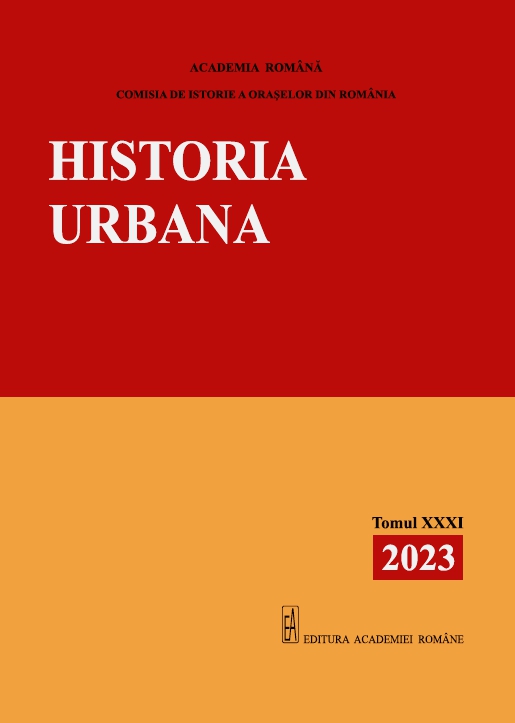Repere în istoria și evoluția străzii „Alexandru Ioan Cuza” din Craiova: Palatul de Justiție
Landmarks in the History and Development of “Alexandru Ioan Cuza” Street in Craiova: The Palace of Justice
Author(s): Mircea GeorgescuSubject(s): History, Fine Arts / Performing Arts, Architecture, Local History / Microhistory, 19th Century
Published by: Editura Academiei Române
Keywords: Urban history of Oltenia; the Palace of Justice from Craiova; architects; Filip Muntureanu; Ion Socolescu; Horia Creangă;
Summary/Abstract: The construction of the Palace of Justice in Craiova is part of the architectural renewal process that encompassed the Romanian urban space in the last decades of the 19th century, a series of public buildings, necessary for institutional modernization, being built throughout the country during this time frame. Although the history of this edifice, symbolical for the architecture of the city, is apparently known, after studying the documents related to the construction of the palace, as well as the newspaper articles in the press of that time, a series of events are revealed, that outline a more complex picture of its evolutionary stages. Moreover, although initially considered one of Ion Socolescu’s works, the building turns out to be, in reality, the work of another architect, less known today, which leads to the need to rewrite some pages in the history of Romanian architecture.This article tries to trace the main stages in the evolution of the design and construction of the Palace of Justice in Craiova, starting with the first architectural designs, which were not materialised by execution, to the last transformations brought to the building, in the 70s of the 20th century, revealing, at the same time, a world of architects and builders divided by rivalries and political favours, especially for the period of Romania’s urban development boom. Finally, we emphasize the importance of the appearance of such an edifice in the city’s landscape, which resulted in the rethinking of the street structure in this area, by the mayors of that time. We also mention the change in the functionality of the building brought about by the communist power installed in Romania after 1947, as part of a process of erasing the local memory and creating, at the same time, a new symbolism for the old heritage of Craiova
Journal: Historia Urbana
- Issue Year: XXXI/2023
- Issue No: 31
- Page Range: 87-115
- Page Count: 30
- Language: Romanian
- Content File-PDF

